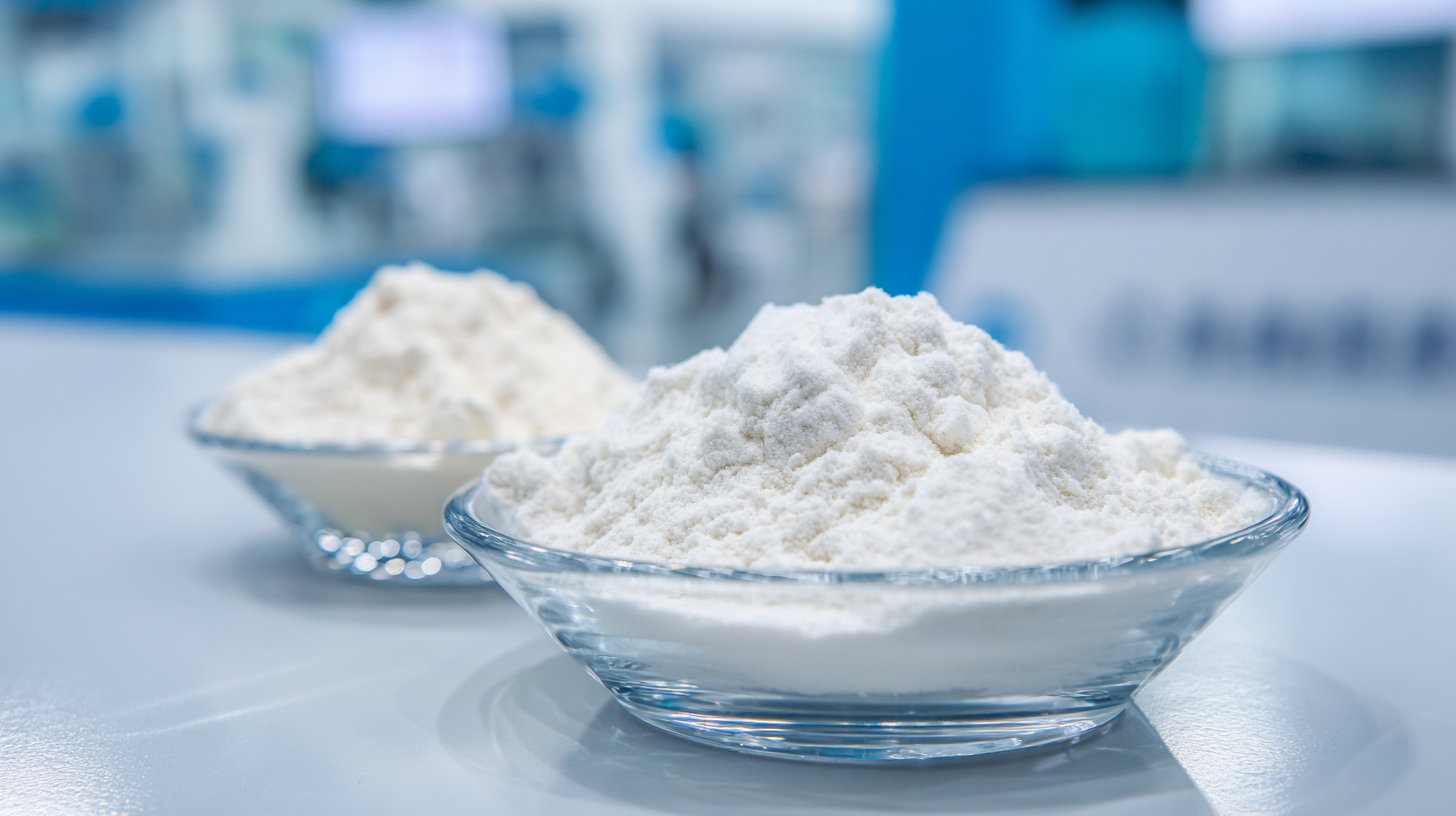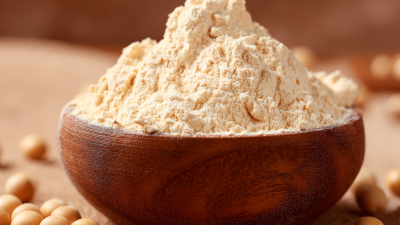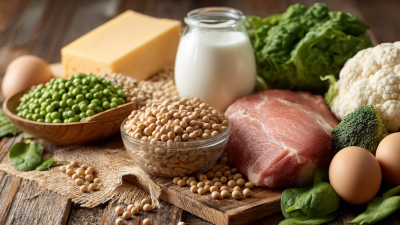As the global demand for health and wellness products continues to surge, the role of Isolate Protein has become increasingly significant in various industries, particularly in food and beverage, dietary supplements, and sports nutrition. According to a recent market report by Grand View Research, the global protein isolate market size was valued at approximately $12.5 billion in 2021 and is projected to expand at a compound annual growth rate (CAGR) of 6.7% from 2022 to 2030. This upward trend reflects a growing consumer focus on plant-based, high-protein diets, with Isolate Protein being pivotal in addressing this shift.
 The 138th Canton Fair in 2025 presents a unique platform for manufacturers, suppliers, and buyers to explore innovative applications and products derived from Isolate Protein, highlighting the industry's commitment to sustainability and health-conscious solutions. As stakeholders convene, they will delve into the latest trends, technologies, and regulatory frameworks shaping the future of this vital sector.
The 138th Canton Fair in 2025 presents a unique platform for manufacturers, suppliers, and buyers to explore innovative applications and products derived from Isolate Protein, highlighting the industry's commitment to sustainability and health-conscious solutions. As stakeholders convene, they will delve into the latest trends, technologies, and regulatory frameworks shaping the future of this vital sector.
The 138th Canton Fair in 2025 is set to showcase pivotal developments in the isolate protein market, highlighting significant trends in consumer behavior and industry projections. According to a report by Grand View Research, the global isolate protein market is expected to reach USD 8.3 billion by 2026, driven by rising health consciousness and the increasing incorporation of protein into diets. As consumers continue to seek high-quality, plant-based protein alternatives, brands are innovating to meet the demand for both nutrition and taste.
Consumer preferences have shifted dramatically, with a notable increase in the popularity of pea and rice protein isolates, projected to experience a CAGR of 7.0% from 2021 to 2028, as reported by Fortune Business Insights. This growth is bolstered by the increasing prevalence of fitness trends and a focus on sustainable nutrition. Companies attending the Canton Fair will seek to align their product offerings with these emerging trends to effectively tap into this expanding market.
Tips: When exploring the isolate protein sector, consider focusing on sustainability as a key selling point. Highlighting eco-friendly sourcing and production processes can resonate with environmentally-conscious consumers. Additionally, providing clear nutritional information and promoting versatility in usage—from shakes to baked goods—can enhance appeal in a competitive marketplace.
| Year | Market Size (Billion $) | Growth Rate (%) | Key Drivers | Consumer Demographics |
|---|---|---|---|---|
| 2023 | 3.5 | 7.5 | Rising health awareness, fitness trends | 18-35 years old, Athletes, Fitness enthusiasts |
| 2024 | 4.2 | 8.0 | Innovative product launches, E-commerce growth | Health-conscious consumers, Millennials |
| 2025 | 5.1 | 8.5 | Increased demand for plant-based proteins | Vegetarians, Vegans, Older adults |
| 2026 | 6.0 | 9.0 | Sustainability trends, Eco-friendly practices | Fitness professionals, Eco-conscious consumers |
The 138th Canton Fair in China promises to be a significant event for the protein industry, especially for isolate proteins. As demand for high-quality protein sources grows, innovation in protein processing technologies emerges as a focal point for enhancing both quality and yield. Advances such as membrane filtration, enzyme treatments, and improved extraction methods have the potential to elevate the nutritional profile of isolate proteins while maximizing production efficiency. This shift not only meets consumer demands for healthier options but also addresses sustainability concerns in protein sourcing.
**Tips for Industry Professionals:** Prioritize continuous learning about the latest processing technologies to stay competitive in the evolving protein market. Collaborate with research institutions to leverage cutting-edge innovations that can optimize your production processes. Additionally, consider attending workshops or seminars at the Canton Fair to gain insights directly from experts in the field.
As the fair showcases the future of isolate proteins, businesses must adapt to these technological advancements. By integrating innovative processing techniques, companies can improve their products' nutritional quality and overall marketability. Setting clear goals for incorporating new technologies will position firms favorably in an increasingly competitive landscape.
As consumer preferences shift towards healthier and more sustainable options, plant-based proteins are taking center stage in the food industry. This increasing demand is driven by heightened awareness of the environmental impacts of animal agriculture and a growing desire for nutrition that aligns with personal health goals. At the 138th Canton Fair in 2025, exhibitors and buyers will explore a variety of plant-based protein products, from pea and soy proteins to innovative formulations that cater to diverse dietary needs.
**Tips:** When considering a shift to plant-based proteins, start by incorporating them gradually into your meals. Experiment with different sources such as lentils, chickpeas, and quinoa to diversify your protein intake. Also, read labels carefully to understand the protein content and nutritional value of processed plant-based products.
Moreover, this culinary evolution reflects a broader lifestyle change where consumers are not only looking for alternatives but are actively seeking out flavors and textures that enhance their dining experience. The rise of plant-based diets represents an exciting opportunity for brands to innovate and connect with health-conscious consumers, ultimately shaping the future landscape of protein consumption.
**Tips:** Engage with your community by sharing recipes or hosting plant-based meal prep sessions to inspire more people to try these alternatives. Celebrating the versatility of plant proteins can foster a supportive environment for those transitioning to this healthier lifestyle.
This chart illustrates the shifting consumer preferences for various protein sources in 2025, emphasizing the growing interest in plant-based proteins alongside traditional sources.
The 138th Canton Fair in 2025 promises to shed light on the evolving landscape of isolate protein and its significant economic impact on global supply chains and trade. Isolate protein, found in various food products and dietary supplements, is rapidly gaining traction due to the growing health consciousness among consumers. This surge has led to increased demand, influencing trade patterns and supplier dynamics across multiple regions. As companies pivot towards more sustainable and protein-rich alternatives, the ripple effects can be seen in sourcing, manufacturing, and distribution sectors.
Tips for navigating this evolving market include staying informed about regulatory changes that may influence production and trade of isolate protein. Additionally, businesses should consider diversifying their supplier base to mitigate risks associated with geopolitical shifts. Engaging in strategic partnerships can also enhance supply chain resilience, allowing companies to adapt to changing consumer preferences effectively. The ongoing transformation in isolate protein markets offers ample opportunities for those willing to innovate and respond proactively to trends.

As the 138th Canton Fair approaches in 2025, the spotlight on isolate protein production will shine not only on its nutritional benefits but also on the pressing need for sustainable practices in the industry. A report by the World Economic Forum highlights that the global protein market is projected to reach $404 billion by 2025, with plant-based proteins accounting for a substantial portion. This growth is accompanied by heightened scrutiny on the environmental impacts of protein sourcing, particularly concerning land use, water consumption, and carbon emissions.
Innovations in sustainable protein production are imperative to address these environmental concerns. According to a study by the Food and Agriculture Organization (FAO), livestock production generates nearly 14.5% of all greenhouse gas emissions. This has led to increased interest in alternative protein sources, such as pea and soy isolates, which require significantly less water and land compared to animal protein. The trend is further supported by a research report published in the Journal of Cleaner Production, indicating that transitioning to plant-based proteins could reduce resource depletion and mitigate climate change impact. As consumers demand more sustainable options, the industry must evolve to meet these needs while ensuring that environmental sustainability remains at the forefront of protein innovation.







